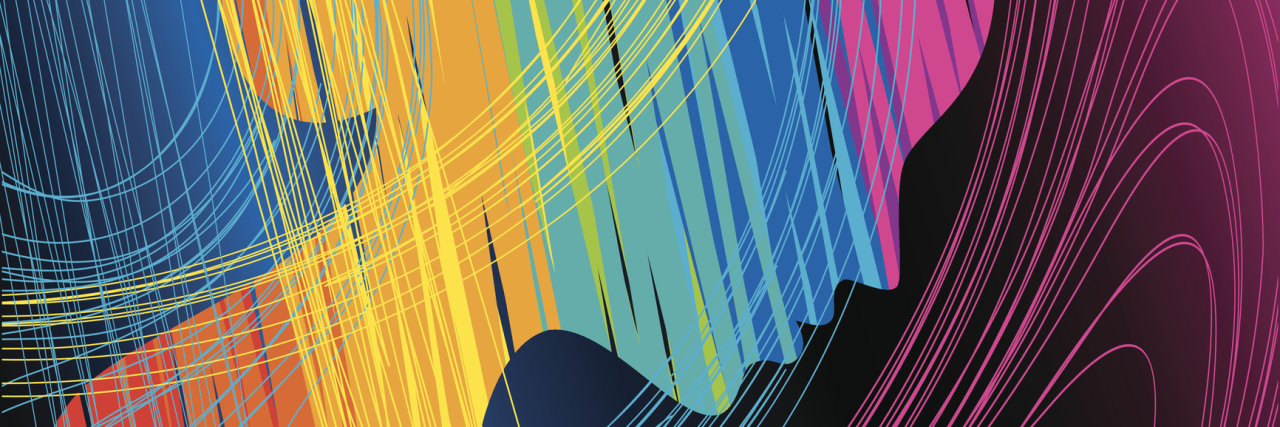Its been a humbling experience for me – this life of chronic illness and pain. Each day we labor over choices we once took for granted. No matter how complex or simple the task, we scrutinize pros and cons, weighing the benefits versus the costs. It’s a balancing act between managing our health and maintaining our connection with the world. It’s necessary. And exhausting.
But even our best efforts can’t guarantee the results we hope for. Years ago, I went through an intense few months where the consequences of choices consecutively ranged from disappointing to disastrous. The worse part? My descent into a spiral of reactions that started with self-blame, trapped me in a continuous loop of fuming and ruminating and left me spinning stories that had nothing to do with the actual incident. I knew this pattern was neither helpful nor healthy. But none of my go to practices – meditation, writing, qigong – could quiet the persistent hum of self-judgment.
I reached my breaking point. It was triggered by a well-intentioned birthday gift card for a pedicure. It sounds trivial, but after 10 years of being generally housebound, the thought of a pedicure – the scents and scraping and massaging – set loose a cascade of concerns. Even as my body screamed, “don’t,” I politely accepted the gift rather than hurt my friend’s feelings.
In the card she’d written, “Self-care is important!” While I agreed with the sentiment, the actual experience left me feeling more bruised than cared for. Something the pedicurist had said stuck in my mind. I plunged into the familiar river of emotional reactions. This time, though, I felt like I was drowning.
Desperate to find solid ground, I leafed through inspirational books looking for insight. That’s when I stumbled upon the Buddhist parable, “The Second Arrow.” In a moment of synchronicity between a pedicure and a parable, a metaphor became my lifeline.
To summarize the story’s message: We can’t control what life inevitably flings at us – chronic illness, disappointments, loss. That’s the first arrow. It hurts. We get trapped in our reactions. That’s the second arrow. It’s more painful than the first wound. But it’s within our control! We can choose not to shoot that second arrow.
The concept was like a beam of light breaking through a fog. As I understand it, this practice isn’t about denying or diminishing our pain. It’s about not adding to the pain. It’s about replacing self-inflicted suffering with self-compassion. So, I applied this perspective to that day’s experience.
After three cancelled appointments, I finally sat in a treatment room with the pedicurist, Sarah. The air smelled of patchouli. It made my eyes sting. The breeze coming through the open window provided no relief, so I blinked away the pain. Sarah scraped dead skin from my feet.
She asked, “How long have you been sick?”
“Ten years.”
“Oh! That’s far too long!”
I nodded.
“I’m sure I can help you get better. I’m a certified holistic nutritionist.”
I didn’t usually talk to strangers about my health, but I’d mentioned it the third time I’d had to cancel. So I rhymed off examples of potions, protocols, and modalities that I’d tried.
“But you’re still sick, so…” She paused. Sighed at my silence. Then continued, “Don’t you want to get better?”
The first arrow flew through the air. Her words landed like a punch in my stomach.
Sarah talked. My mind raced, “Don’t I want to get better?! But you have the magic cure? I shouldn’t tell people I’m ill. It’s my own fault. I wanted to do something normal. Idiot!”
I’d shot the second arrow.
I finally said, “I’m working with several practitioners, but I’ll keep your services in mind.”
The conversation ended. My pain continued.
As I reflected on the experience after having read the parable, my chattering mind grew quiet. And in that quiet, the fog that had enveloped me lifted. I saw that my reactions were causing far more suffering than the words of this stranger. Her words had stirred up challenges that came with being chronically ill.
Over time, the second arrow metaphor has helped me become more skillful in making healthy choices and in responding to whatever happens with an appropriate measure of grace and grit. With regular practice I’ve developed a greater capacity to notice when I’m reacting with self-blame and choose instead to respond with greater self-compassion. I’m more resilient when hurt by life’s arrows. And when I shoot the arrow?
I’ve learned to be a better friend to myself.
This is how I put the concept into practice:
1. Notice I’ve been hit by the first arrow. Acknowledge the pain – physical, mental, emotional. I might simply say, “That hurts,” and place my hand near my heart.
2. Pause. Taking a few deep breaths helps me stay in the present which also slows down the river of reactions.
3. Ask: “Do I really want to shoot the second arrow?”
I hope by sharing my story and this practice, others will be spared the struggles of the second arrow.
We want to hear your story. Become a Mighty contributor here.
Thinkstock Image By: AAGGraphics

